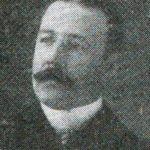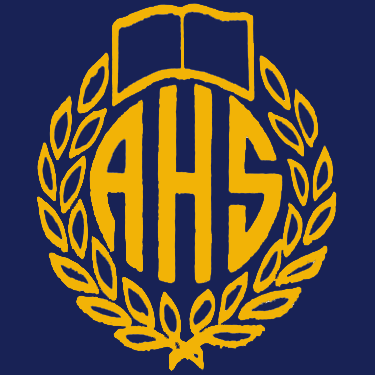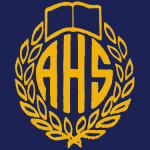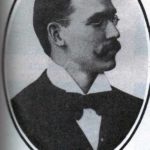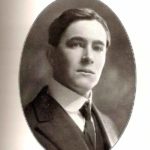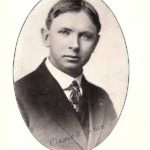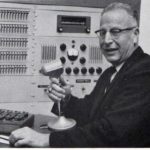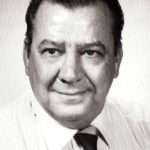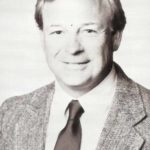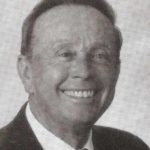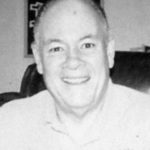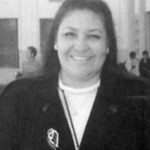
2017 – Robert Saldivar – Class of 1996
Roberto Saldivar, a Class of ’96 graduate is now serving as Anaheim High’s newest principal and the first alumnus to serve in that position. He previously was at Orange View Junior High as principal.
Saldivar began his teaching career at Anaheim in 2001, after earning his bachelor’s degree in kinesiology with a minor in health from Cal State Fullerton. He later earned his master’s in education from Azusa Pacific University.
At Anaheim High he taught AVID, health science and coached baseball, football, and basketball. He began his administrative career as an assistant principal at Ball Junior High, then returned to Anaheim as an AP before becoming the principal of Orangeview Junior High, also an AUHSD school.

Saldivar with his family of junior Colonists
Saldivar, whose wife Liliana Hernandez is also an AHS graduate from Class of 1999, said he is grateful for the opportunity to lead his alma mater. “The saying really does ring true in my case: ‘Once a Colonist, always a Colonist.’ ”
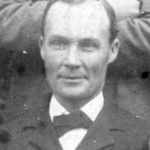
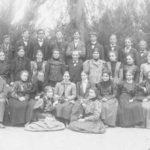
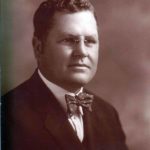 The Clayes’ family three-generational connection to Anaheim High School goes back to 1914 when Joseph A. Clayes began his tenure as a teacher of art and commerce. He became Anaheim High’s principal in the fall of 1919 and remained in that position for 22 years until his death on July 1, 1941, becoming the school’s longest serving principal.
The Clayes’ family three-generational connection to Anaheim High School goes back to 1914 when Joseph A. Clayes began his tenure as a teacher of art and commerce. He became Anaheim High’s principal in the fall of 1919 and remained in that position for 22 years until his death on July 1, 1941, becoming the school’s longest serving principal.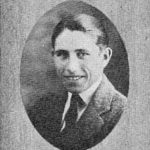

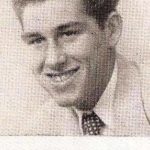
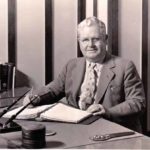 Not only was he a beloved principal, he served during a time when Anaheim High was in its formative years. His tenure included such life-changing events as World War I, the stock market crash of 1929, the 1933 Long Beach earthquake that did irreparable damage to Anaheim High, and the 1938 flood that devastated the City of Anaheim.
Not only was he a beloved principal, he served during a time when Anaheim High was in its formative years. His tenure included such life-changing events as World War I, the stock market crash of 1929, the 1933 Long Beach earthquake that did irreparable damage to Anaheim High, and the 1938 flood that devastated the City of Anaheim. Principal Clayes’ legacy lives on at Anaheim High in the form of the school logo he designed. The copyrighted logo appeared for the first time in the 1928 yearbook and was officially adopted as the Colonist symbol.
Principal Clayes’ legacy lives on at Anaheim High in the form of the school logo he designed. The copyrighted logo appeared for the first time in the 1928 yearbook and was officially adopted as the Colonist symbol.
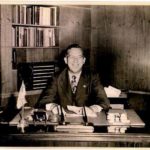
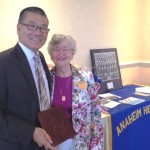
 James Miller Guinn (aka J.M. Guinn), was a prominent educator and historian in southern California during the late 19th and early 20th centuries.
James Miller Guinn (aka J.M. Guinn), was a prominent educator and historian in southern California during the late 19th and early 20th centuries. 1879 – The new two-story Central School opens on January 16. The school, which features as clock steeple and bell tower, is built in the center of a two-acre lot at 231 Chartres Street. The 217 elementary through high school students are taught by two men and two women who are paid $75 a month.
1879 – The new two-story Central School opens on January 16. The school, which features as clock steeple and bell tower, is built in the center of a two-acre lot at 231 Chartres Street. The 217 elementary through high school students are taught by two men and two women who are paid $75 a month.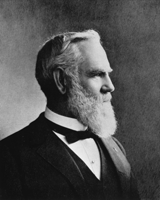 In 1881, after Anaheim schools showed marked improvement, the city of Los Angeles hired Guinn to superintend their school system. After two years in this position, Guinn shifted his vocational interests into real estate and merchandising, although he maintained a strong interest in Los Angeles’ history and educational facilities for the remainder of his life. He also served as deputy county assessor for several years.
In 1881, after Anaheim schools showed marked improvement, the city of Los Angeles hired Guinn to superintend their school system. After two years in this position, Guinn shifted his vocational interests into real estate and merchandising, although he maintained a strong interest in Los Angeles’ history and educational facilities for the remainder of his life. He also served as deputy county assessor for several years.